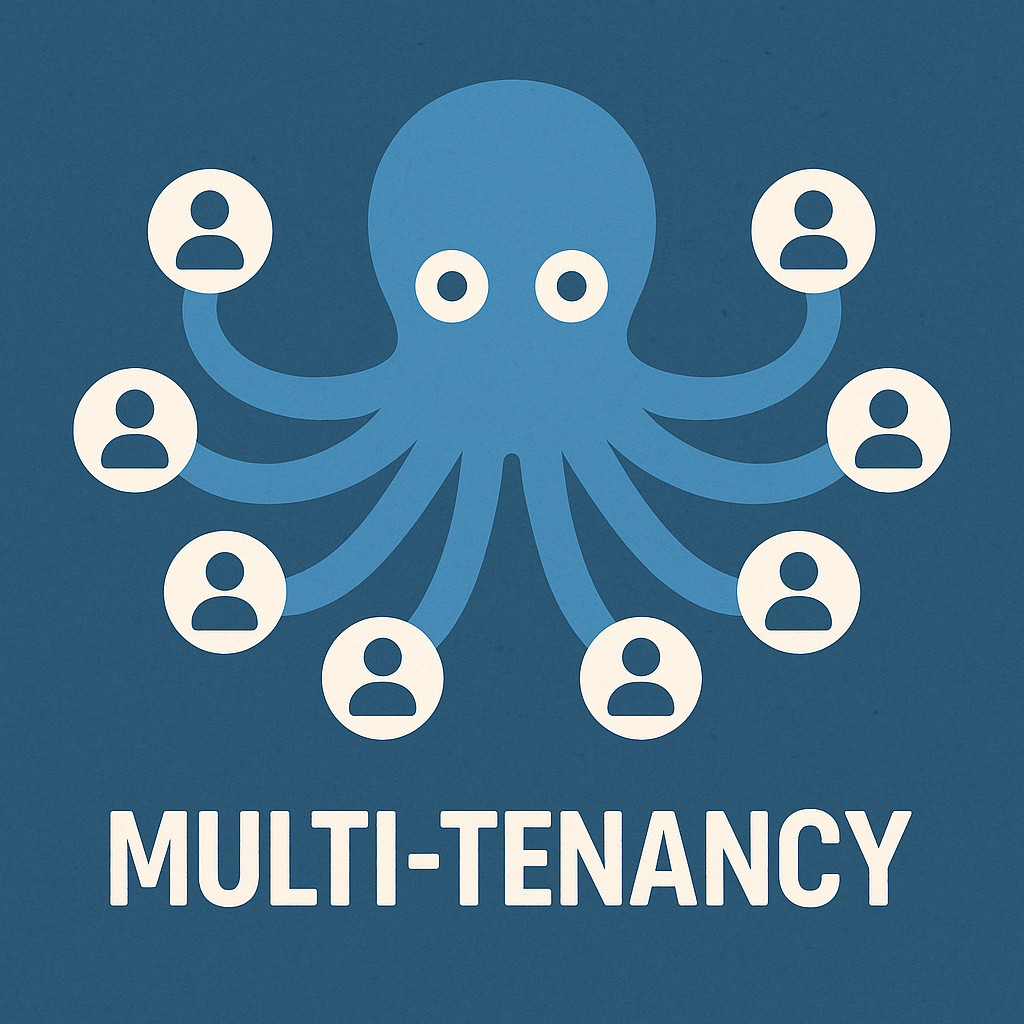Understanding Multi-Tenancy: What It Is and Why It Matters
If you're building a SaaS product or any system that will serve multiple clients (companies, organizations, teams), you'll inevitably come across the term multi-tenancy. What does it mean? Why does it matter? And what are the most common approaches?
What is multi-tenancy?
Multi-tenancy is an architectural pattern where a single instance of an application serves multiple clients (called tenants). Each tenant has the impression of using their own isolated system — even though everything runs on shared infrastructure. s A tenant might be a company using your SaaS product. Your app must isolate their data and configuration from others while sharing the same application core.
Why does it matter?
Multi-tenancy becomes real when:
- Your app starts serving more than one customer
- You want to scale cost-effectively
- Clients request separate configurations
- Legal or compliance requirements (like GDPR or ISO) demand strict data isolation
Main approaches to multi-tenancy
Multi-tenancy usually plays out on the data layer. Here are the three most common models:
1. Shared database, shared tables
All tenants share the same tables, with a tenant_id column in each row.
- Pros: simple to scale, cheap to maintain
- Cons: easier to make mistakes that expose data, harder to migrate tenant data separately
2. Shared database, separate schemas
Each tenant gets a separate schema within one database.
- Pros: better isolation
- Cons: more operational overhead, not always well supported by all database engines
3. Separate databases
Each tenant gets their own database instance.
- Pros: strong data isolation, easier to manage per-tenant backups or versioning
- Cons: higher costs, more complex infrastructure, difficult to aggregate cross-tenant data
Other things to consider
- Routing logic – how do you determine which tenant an incoming request belongs to (e.g., subdomain, token, header)?
- Scalability – will your multi-tenancy design still work with 10, 100, or 1000 tenants?
- Security – how do you guarantee one tenant cannot access another's data?
Summary
Multi-tenancy isn't just a buzzword – it's a critical architectural decision that affects the security, scalability, and cost of your app. There's no one-size-fits-all solution – your choice depends on your product, business needs, and customer expectations.
If you're building something that will support multiple clients – it's better to design for it now rather than fix it later.
